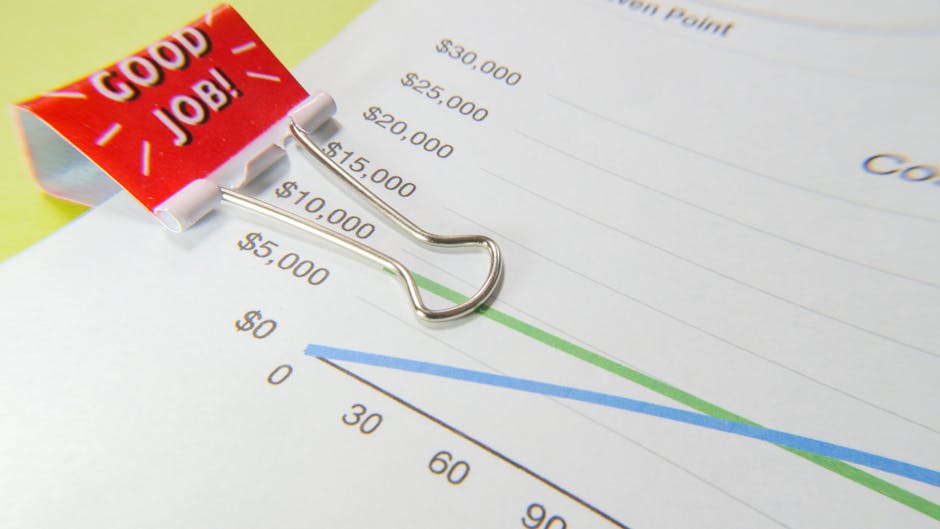Cost Optimization: The Key to Profitability
Did you know that small changes in your costs can lead to big improvements in your profits? Cost optimization is one of the most powerful tools a business can use. It’s all about reducing expenses without sacrificing quality. In this article, we’ll explore how cost optimization can help your business thrive.
What is Cost Optimization?

Cost optimization involves analyzing your business expenses and finding ways to reduce them. It’s not just about cutting costs; it’s about spending smarter. Think of it like cleaning out your closet. You want to keep the essentials and let go of what you don’t need.
By streamlining your costs, you can free up resources to invest in things that truly matter. This can lead to better products, happier customers, and ultimately, greater profits.
Why is Cost Optimization Important?

Cost optimization is crucial for several reasons:
- Increased Profit Margins: Lower costs mean higher profits. Simple math!
- Better Resource Allocation: Money saved can be reinvested into growth areas.
- Competitive Advantage: Businesses that manage costs well can offer better prices.
- Economic Resilience: Lower costs can help a business weather tough times.
According to a study by McKinsey, companies that focus on cost optimization can see profit margins improve by 20-30%. That’s a significant boost!
How Can You Start Cost Optimization?

Starting with cost optimization doesnt have to be overwhelming. Here are some steps to get you going:
- Identify Key Areas: Look at your biggest expenses. Are there areas where you can cut back?
- Analyze Your Data: Use data to understand spending patterns. Where is your money going?
- Set Clear Goals: Decide what you want to achieve. Is it saving money or improving efficiency?
For example, if you run a small caf, consider your supply costs. Would switching suppliers or buying in bulk save you money?
What Techniques Help in Cost Optimization?

There are many techniques you can use. Here are some effective ones:
1. Lean Management
This approach focuses on minimizing waste. It encourages you to do more with less. For instance, a manufacturing company can reduce excess materials by improving production methods.
2. Automation
Investing in technology can save you time and money. Automating repetitive tasks means fewer mistakes and faster processes. Think of scheduling software that frees up hours each week.
3. Strategic Sourcing
Finding the right suppliers can lower your costs significantly. By negotiating better deals or exploring alternative suppliers, you can save money on materials and services.
4. Process Improvement
Regularly review your internal processes. Are there steps that slow things down? Streamlining your workflow can lead to cost savings and improved productivity.
How to Measure Cost Optimization Success?
it’s essential to track your progress. Here are some ways to measure your success:
- Cost Savings: Look at overall savings compared to previous months or years.
- Profit Margins: Analyze your profit margins before and after implementing techniques.
- Customer Satisfaction: Ensure that cost-cutting doesnt hurt your service quality.
Consider using key performance indicators (KPIs) to keep track of your goals. This will help you stay focused and make adjustments as needed.
Common Misconceptions About Cost Optimization
Many people have misconceptions about cost optimization. Lets clear a few up:
Is Cost Optimization Just About Cutting Costs?
No! While it involves reducing expenses, it’s more about smart spending. The goal is to optimize, not just trim the budget.
Does Cost Optimization Affect Quality?
Not necessarily. If done correctly, it can enhance quality. For example, investing in better materials can lead to a superior final product, even if you save on other costs.
What Are the Potential Risks?
While cost optimization has many benefits, there are risks to consider:
- Short-Term Focus: Focusing only on immediate savings can hurt long-term growth.
- Employee Morale: Cuts in spending may lead to job losses or cutbacks, affecting team spirit.
- Quality Compromise: Poor choices can lead to lower product quality.
Always balance cost savings with quality and employee well-being. After all, your team is your greatest asset.
Case Studies: Success Stories in Cost Optimization
Lets take a look at a few businesses that excelled in cost optimization:
1. Starbucks
Starbucks revamped it’s supply chain to cut costs. They streamlined operations and improved inventory management. As a result, they saved millions each year, allowing them to invest in new stores and technology.
2. Walmart
Walmart uses advanced data analytics to manage it’s supply chain effectively. This approach helps them keep prices low and inventory high. Their commitment to cost optimization has made them a leader in the retail industry.
What Can You Do Right Now?
Ready to start your cost optimization journey? Here are some actionable steps you can take today:
- Review Your Expenses: Take a good look at your financial statements.
- Talk to Employees: Gather feedback on what’s working and what isn’t.
- Set a Budget: Create a budget that allows for flexibility while focusing on savings.
Remember, cost optimization is not a one-time task. It’s an ongoing process that can lead to sustained growth and profitability.
Final Thoughts
Cost optimization is the key to unlocking greater profitability. it’s about making smart choices and continually looking for ways to improve. With the right strategies, you can reduce costs without sacrificing quality. Start small, and watch your business grow!
For more insights on improving your business, check out our post on Improving Business Efficiency.
Now, go back to your business and think about how you can optimize costs today!



